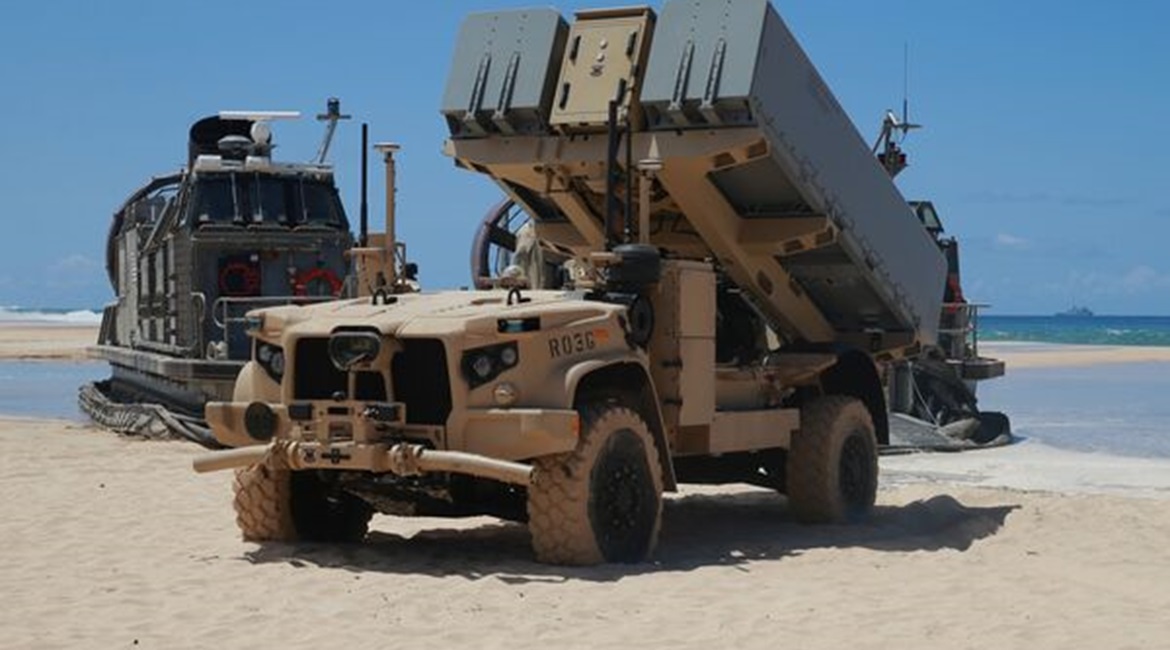
The US Marine Corps (USMC) is inching closer to fielding a mobile, anti-ship weapon system ideal for the Indo-Pacific region and recently test-fired two missiles that hit a sea-based target, the service announced on 17 August.
As part of the Large-Scale Exercise 21 scenario, the service used its new Navy Marine Expeditionary Ship Interdiction System (NMESIS) on 15 August to validate some of its operating concepts including deploying it from a C-130 Hercules and a Landing Craft Air Cushion (LCAC).
“During the exercise, forward-deployed forces on expeditionary advanced bases detected and, after joint command-and-control collaboration with other US forces, responded to a ship-based adversary,” the USMC wrote. “Simultaneous impacts from multiple, dispersed weapons systems and platforms across different US services, including NMESIS, engaged the threat.”
Since NMESIS is still under development, the service said that engineers managed the weapon's fire-control system during the event but noted that marines were able to practice manoeuvring the system.

A Navy Marine Expeditionary Ship Interdiction System (NMESIS) launcher deploys into position aboard Pacific Missile Range Facility Barking Sands, Hawaii, on 16 August. The NMESIS and its Naval Strike Missiles participated in a live-fire exercise during Large-Scale Exercise 2021. (US Marine Corps)
The USMC is developing this mobile, anti-surface warfare weapon as part of its Force Design 2030 plan. In its current configuration, the system is based around an Oshkosh Defense 4×4 unmanned Joint Lightweight Tactical Vehicle (JLTV) chassis that is dubbed the Remotely Operated Ground Unit for Expeditionary (ROGUE) Fires. This platform houses a launcher that can fire two of Raytheon's Naval Strike Missiles (NSMs).
Looking to read the full article?
Gain unlimited access to Janes news and more...






